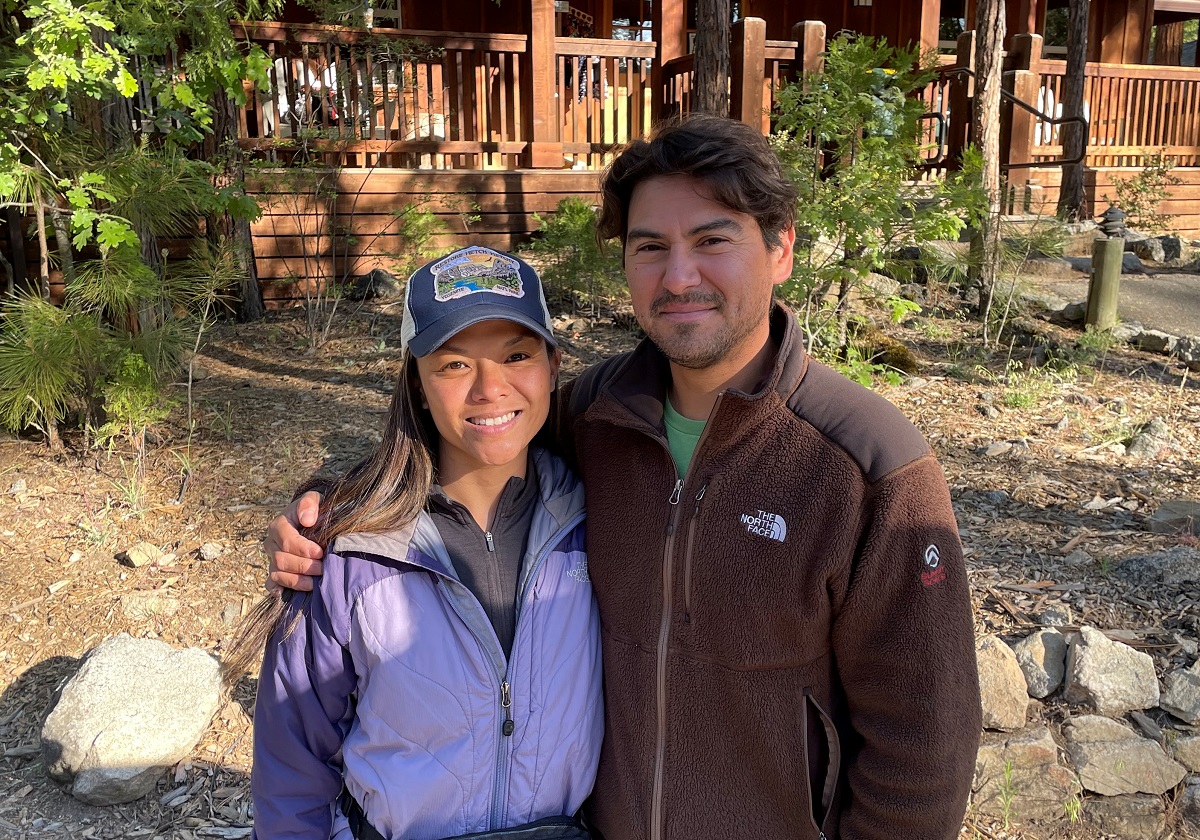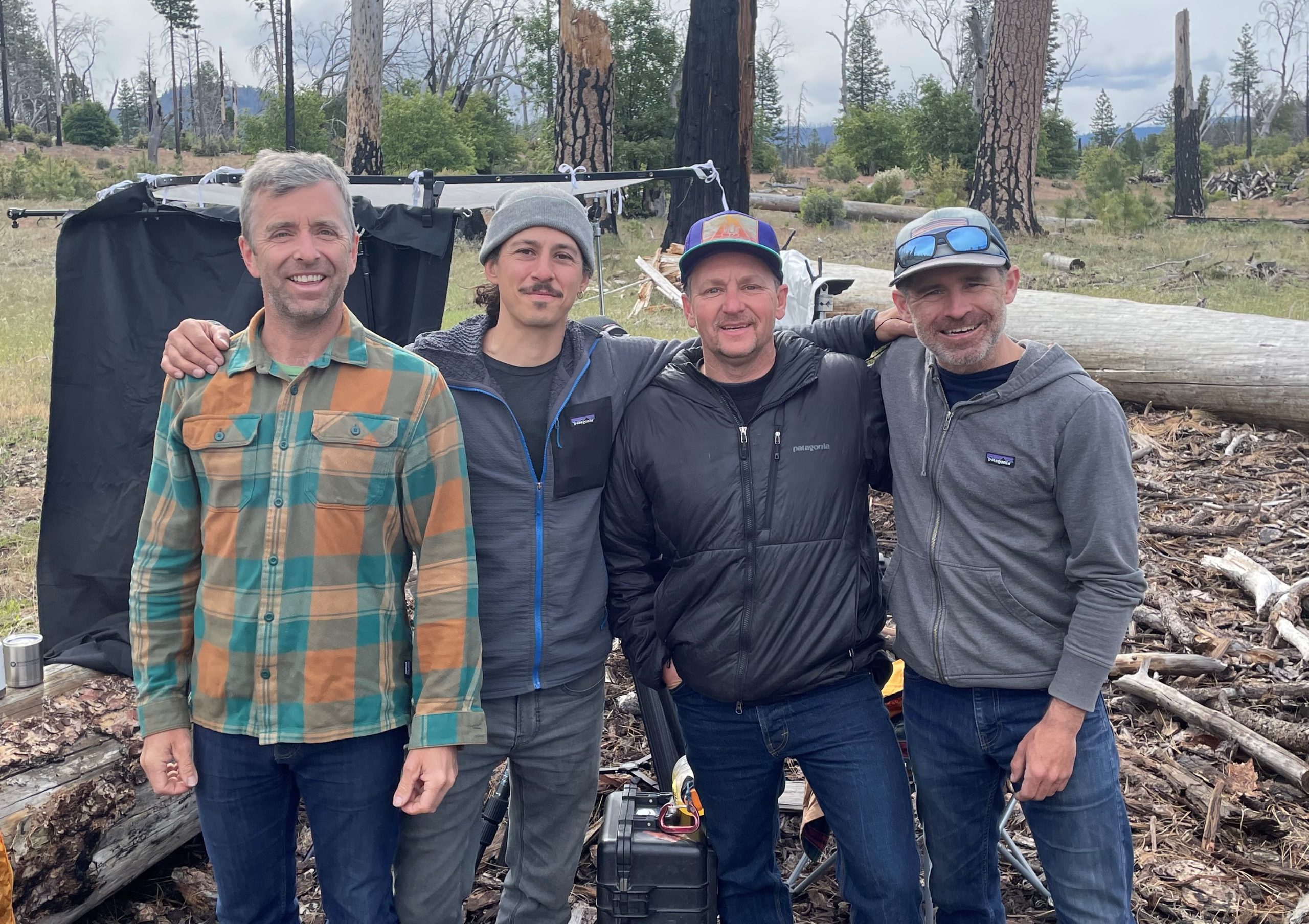
by Spreck | Aug 22, 2021 | Uncategorized
At Restore Hetch Hetchy, we care about reliable water supplies for all communities, but we pay particular attention to San Francisco. After all, restoration can only be accomplished if water supplies for the San Francisco’s and its wholesale customers are undiminished. Fortunately, this can be accomplished,. As we have said over and over, not a drop need be lost when Hetch Hetchy Reservoir is emptied and the valley is restored. For more information on the solutions we recommend, see our Summer Newsletter or Water and Power System Improvements Necessary to Accommodate Restoration of Hetch Hetchy Valley in Yosemite National Park (2018).
Fortunately, San Francisco’s water system is in good shape. The City’s supplies in its Tuolumne watershed reservoirs are substantial, and are designed to last through a lengthy drought. Water managers cannot be blamed, however, for worrying about extended droughts – that’s their job.
Figure 1 provides a snapshot of San Francisco’s water rights over the last three years, along with its average diversions to the Bay Area and its storage capacity in the Tuolumne Watershed. Water Year 2019 was good to San Francisco, providing more than enough flow to fill Hetch Hetch Hetchy Reservoir, Cherry and Eleanor Reservoirs, and the City’s water bank in Don Pedro Reservoir.
2020 was a dry year and San Francisco’s water rights yielded less than its need to divert water to the Bay Area, so it needed to withdraw about 60,000 acre-feet from its stored supplies (evaporation and losses play a small role in the need for storage withdrawal as well).
2021 has been critically dry and San Francisco’s junior water rights on the Tuolumne River have provided only 44,873 acre-feet of supply (The Turlock and Modesto Irrigation Districts have senior rights and are entitled to more than 10 times as much of the river’s flow in 2021.) So this year, San Francisco will need to draw down its storage by 180,000 acre-feet or so.
Still San Francisco’s system will be in good shape even if the drought persists another year. But for everybody’s sake, we hope water year 2022 (which begins October 2021) will be good and wet. And for the sake of the fires, let’s hope the rain comes early as well.
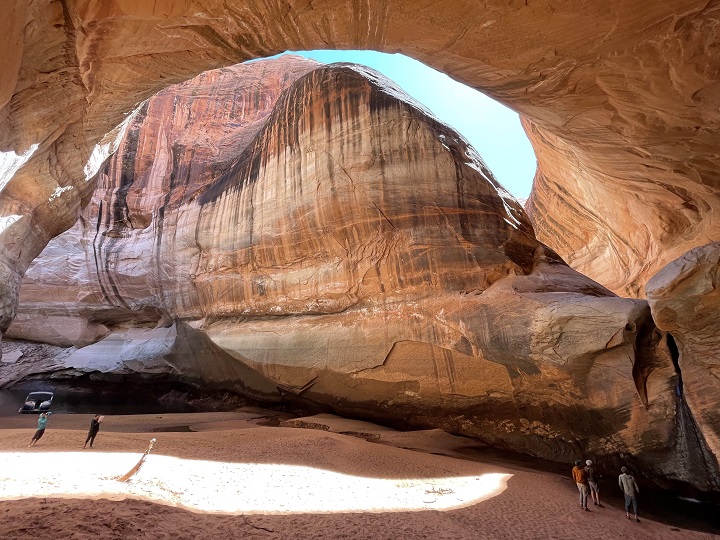
by Spreck | Aug 15, 2021 | Uncategorized
Glen Canyon and Hetch Hetchy Valley
Reservoir levels have dropped as a result of the drought gripping much of the American West. In California, the phenomenon is recent as reservoirs were generally full in 2019. Storage levels in the Colorado Basin, however, have been dropping steadily for some time.
No place is this more evident that in Glen Canyon, where Lake Powell is at the lowest level in decades. Glen Canyon Dam was completed in the mid-1960’s when few had seen the area. The dam is the bane of many desert lovers, including author Edward Abbey who fantasized about blowing it up in The Monkey Wrench Gang.
This week’s New Yorker includes a wonderful article on the history of Glen Canyon and the many folks who are exploring the area and are able to access places that have been underwater until recently.
Glen Canyon and Hetch Hetchy Valley share at least two things in common. First, both are wonders of nature that were destroyed by controversial water storage projects. Second, both projects provide only modest contributions to regional water supply.
Geographically, Glen Canyon and Hetch Hetchy Valley are very different. Glen is a sandstone canyon is in the southern Utah desert, just upstream of the Grand Canyon and downstream of Canyonlands National Park. Hetch Hetchy is in the granite-laden Sierra Nevada, amidst forests of pine and fir.
And Glen Canyon Dam can hold 26,000,000 acre-feet of water, 72 times the size of Hetch Hetchy Reservoir – although siltation over the last 55 years may have reduced its capacity a bit.
I have a personal connection to Glen Canyon – which led to my involvement in Restore Hetch Hetchy.
In the mid 1990’s I was asked to look at the Bureau of Reclamation’s CRSSEZ Model (Colorado River Storage Simulation), to understand the nature of Colorado River water being delivered to the Imperial Valley and urban southern California. I thought I would see what happened if Glen Canyon Dam were removed in CRSSEZ, and its water allowed to flow downstream into Lake Mead.
At first, I thought the simulation modeling did not work because the model results were barely different. But looking harder, it made sense. The river’s average flow was only 14,000,000 acre-feet per year. Lake Mead itself could hold twice that volume and there are other upstream dams as well. At some point, additional storage just leads to more evaporation and losses without any help for water supply reliability.
I told a few folks, including a Sierra Club rep in Arizona. Then, in 1997, I got a call, asking if David Brower and Adam Werbach (past and sitting Sierra Club Presidents) could use the results in an upcoming hearing at the U.S. Senate. I said yes, but nothing substantive happened after the hearing. Two years later, Brower suggested to Restore Hetch Hetchy founder Ron Good that he invite me to join his new organization.
At Restore Hetch Hetchy, we are committed to helping San Francisco replace the modest (but important) increment of supply that Hetch Hetchy Reservoir provides. As our recent newsletter explains, we think groundwater banking, expanding Calaveras Reservoir and recycling are the best options.
Hetch Hetchy Valley in Yosemite National park can be restored without anyone losing a drop of water supply.
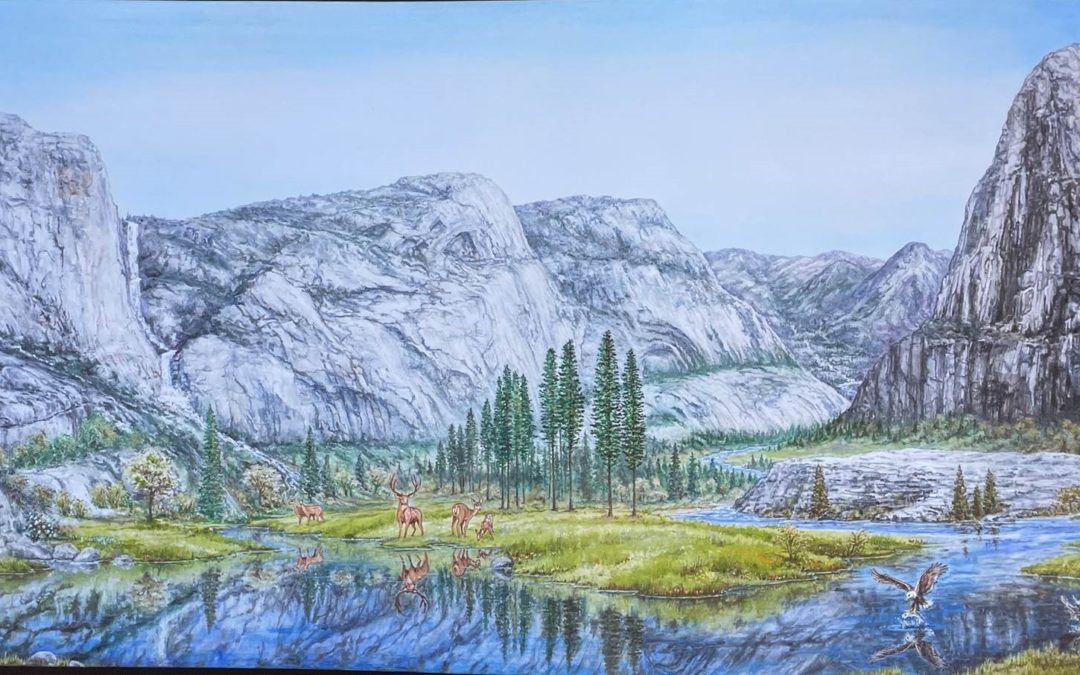
by Spreck | Jul 21, 2021 | Uncategorized
Our 2021 Summer Newsletter is available online and in hard copy. We apologize for the delay, but we wanted to wait until we had photos from our rock climbing expedition to include. We think the images from the climb are spectacular and we look forward to completion of the film.
If you have received a hard copy and would like one, let us know and we will send it. Please note that the clear sleeve used to deliver the newsletter is plant-based and compostable. (A few members mistakenly assumed it is plastic.)
Thanks very much to Tom Coyle (above) and Robert Rollins for their artwork, to Ron Rick for his design, and to Julene Freitas, James Q Martin and Mary Racila for their contributions to the Newsletter’s content.

by Spreck | Jul 11, 2021 | Uncategorized
Due to the pandemic, admission to Yosemite through its Big Oak Flat, Arch Rock, South and Tioga Pass entrances is restricted. Unless they have a permit, park visitors can only enter Yosemite through its Hetch Hetchy gate.
Fresno is the closest large city to Yosemite, so its news outlets cover the park closely. Reporter Brandon Johansen of KFSN-TV, Fresno’s ABC affiliate, was intrigued to venture to Hetch Hetchy for the first time.
We were happy to join Brandon and to share Hetch Hetchy with him. Park visitors need to experience Hetch Hetchy and to learn its story before they will support restoration.
If you’ve been to Hetch Hetchy this spring, you may know that it’s markedly more crowded than usual. When the valley is restored, we will need to work thoughtfully with the Park Service to develop a plan that accommodates visitors while protecting Hetch Hetchy’s natural splendor.
For now, we’re happy to see more park visitors flock to Hetch Hetchy.

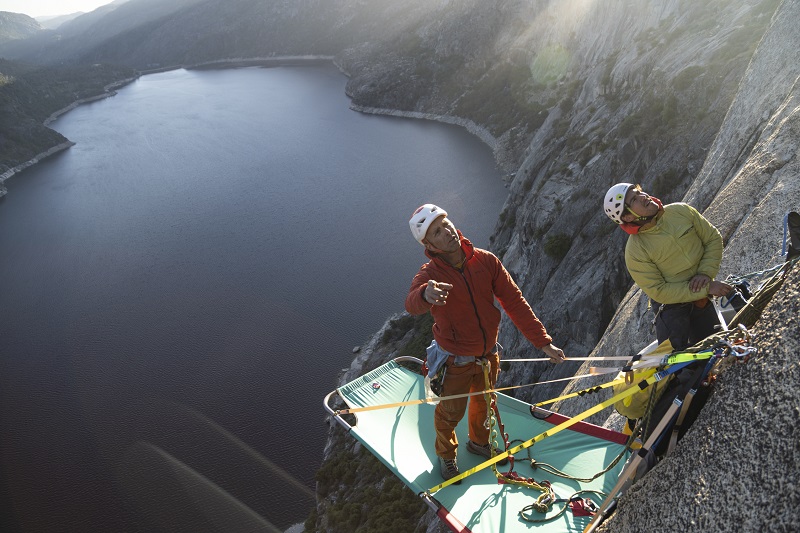
by Spreck | Jun 6, 2021 | Uncategorized
(Photo James Q Martin)
People go to Yosemite for many reasons. Some simply marvel at some of the world’s most spectacular granite walls and tallest waterfalls. Some wander the meadows and watch wildlife or fish. Others hike, whether it’s a 2 mile loop on level ground, a 5000 foot vertical ascent or a multi-day backpacking trip. Most go for a combination of activities, and to share the time with family and friends.
Then there are the rock climbers. A hardy and daring group of adventurers who are called by the granite monoliths and drawn to scale those vertical walls. Climbing is not for everybody. Most of us, however, vicariously share a slice of the thrill and the beauty when we see the climbers high above, and perhaps envy them for their courage and dedication.
As a result of the reservoir and limited access, few climbers go to Hetch Hetchy. But some, like Lucho Rivera, love it and know it well.
Since Restore Hetch Hetchy has asked the National Park Service to expand access for all forms of recreation at Hetch Hetchy, including climbing, we thought we would promote the area by making a film. With humility, we asked some top climbers and outdoor cinematic experts for their help
The logistics were no simple task. Gate hours are limited and camping is mostly prohibited. There are seasonal climbing restrictions to protect peregrine falcons in some areas. Yosemite would require a wilderness permit. And we needed to put together a team.
Burkard partnered with veteran filmmaker James “Q” Martin. Q hired cinematographer Mikey Shaefer (if you’ve seen Free Solo, Mikey is the guy saying “I can’t look”) and Nelson Klein as his crew.
Lucho was a logical choice as a climber as he knows Hetch Hetchy well, including the walls east of Wapama (climbing west of Wapama during spring is prohibited to protect nesting peregrine falcons). Professional climber (and comedian) Timmy O’Neill had ascended the walls in Yosemite Valley for 30 years, and was excited to go to Hetch Hetchy for the first time with Lucho to “show him the ropes”.
The team was complete. The experts would converge during the third week of May. We hoped for good weather.
We gathered for dinner at the Evergreen Lodge. Some were old friends and happy to see each other; others were just getting acquainted. The mystique of Hetch Hetchy was intriguing – everyone seemed to want to know more about its history and our plan for restoration. Dinner ended a bit after 10 p.m. Some went to bed while others stayed up several more hours packing gear for the early morning start.
The weather cooperated, cooling off during the third week of May – ideal for hiking and climbing but chilly at night for the guys on the rock. The loads, including ropes and other climbing gear as well as camping supplies, were heavy. Everyone got an early start so they could hike the four miles to the base of Hetch Hetchy Dome and get started.
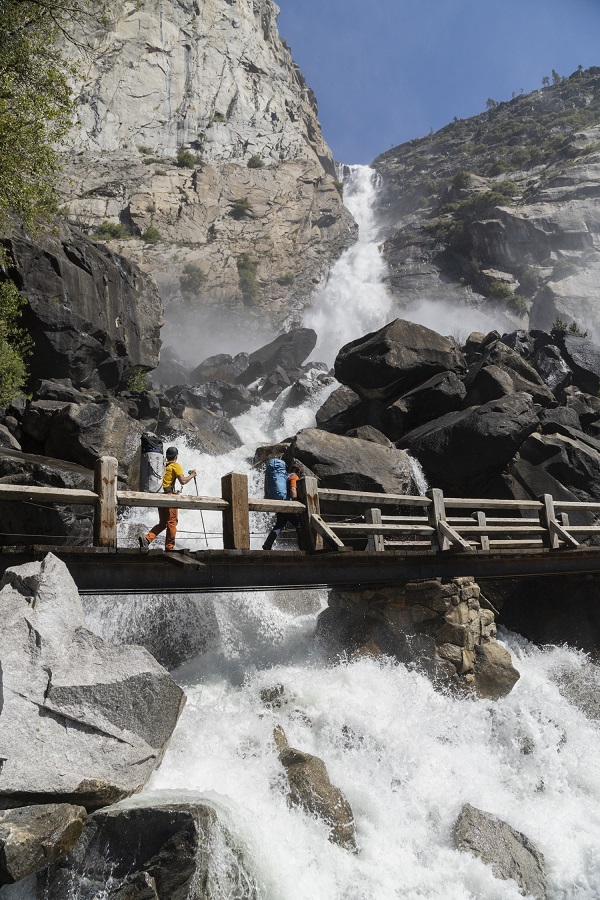
The crew carried heavy packs on the four mile hike to the base of Hetch Hetchy Dome. Wapama Falls was spectacular but fortunately not high enough to make crossing its bridges dangerous. (Photo: James Q Martin)
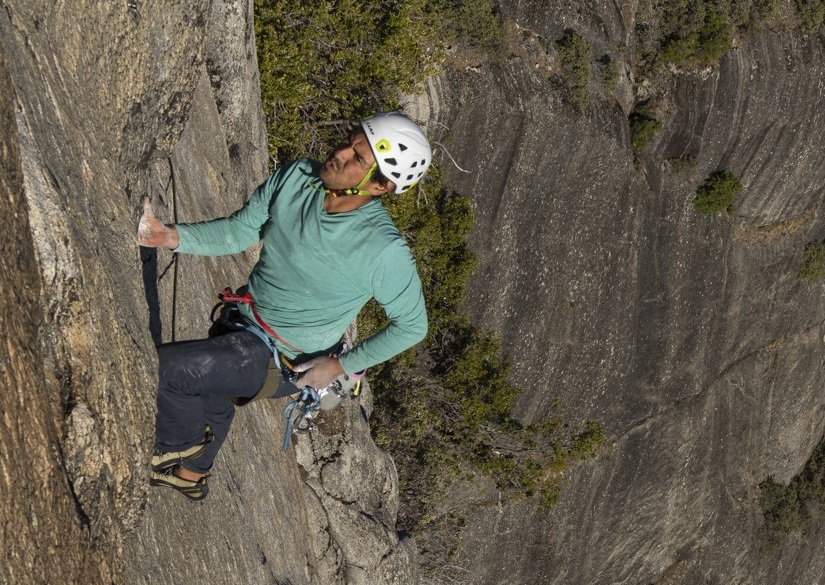
Lucho Rivera leads the way up the rock. Timmy and the film crew depended on Lucho’s experience and knowledge of Hetch Hetchy’s granite walls. (Photo: James Q Martin)

Timmy O’Neill high on the wall above the reservoir. Timmy has climbed in Yosemite Valley for 30 years but this was his first trip to Hetch Hetchy. (Photo James Q Martin)
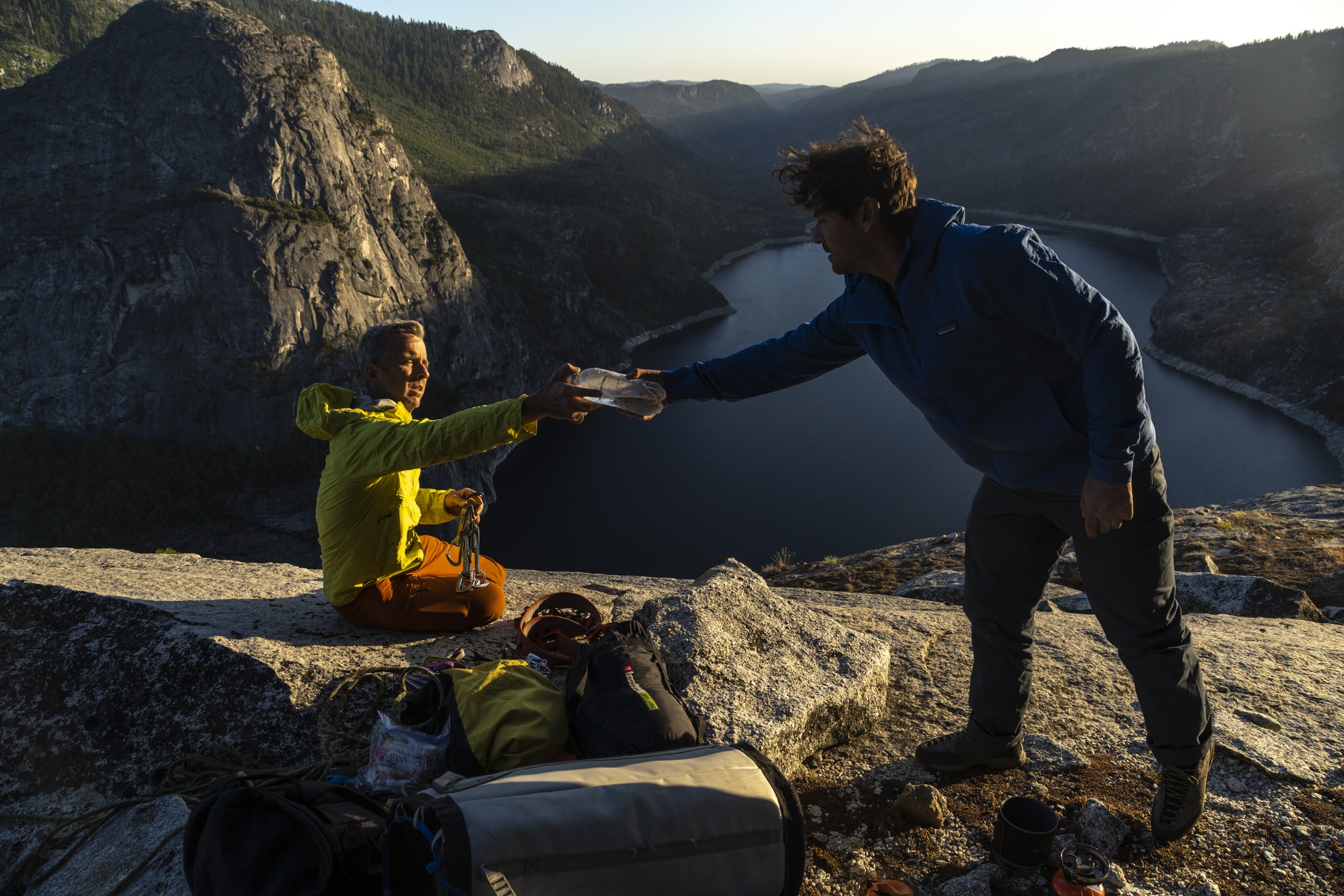
As the sun sets, Timmy and Lucho share a much needed drink of water after a long and wonderful day on Hetch Hetchy’s walls. (Photo: James Q Martin)
The raw footage is in the hands of editors. The film should be available in July. We can’t wait to see it and to share it.
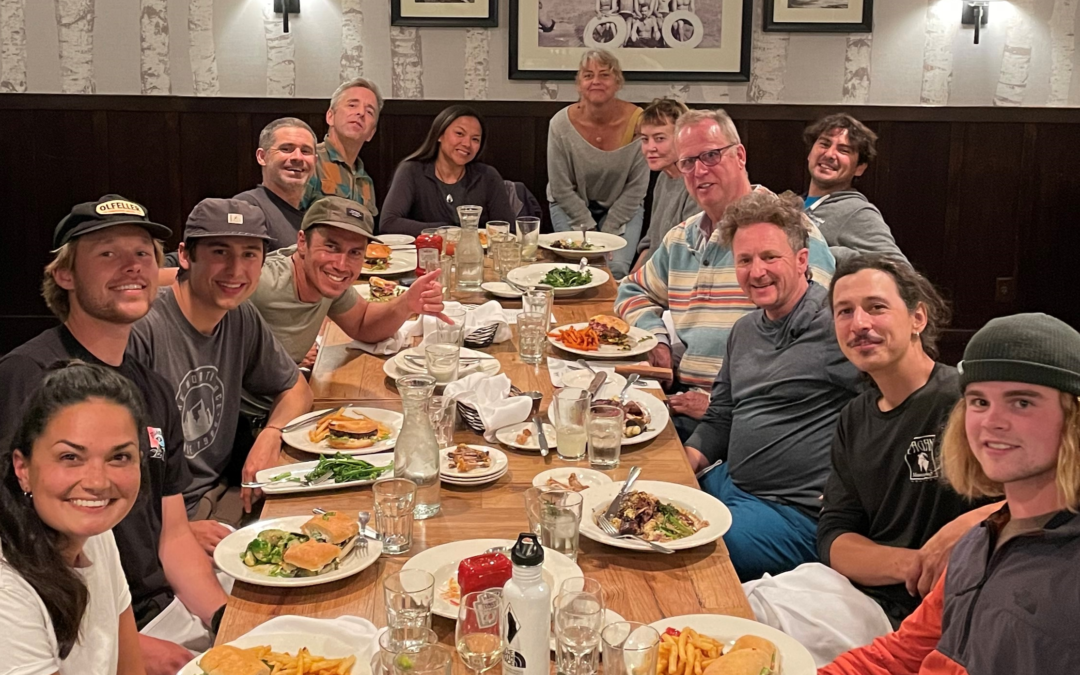
by Spreck | May 22, 2021 | Uncategorized
This week, “rock” stars from throughout the west converged at Hetch Hetchy. The occasion was not another Woodstock or Coachella, but rather the opportunity to climb granite monoliths at Hetch Hetchy and record the event for posterity.
Yosemite Valley is known as the climbing Mecca of the world, but few venture to scale the similar walls at nearby Hetch Hetchy. The logistics of climbing at Hetch Hetchy are more challenging due to the existence of the reservoir, as well as limited gate hours and a prohibition on camping – things Restore Hetch Hetchy is committed to changing. So, as part of our outreach, we asked some well known climbers to scale Hetch Hetchy Dome and a crackerjack crew to film the event.
The film, due for completion in July, will be a joint production of Burkard Studio and Q Media. Chris Burkard and Q Martin reached out to Lucho Rivera, an experienced climber from San Francisco who has explored many of Hetch Hetchy’s walls and to Timmy O’Neill, who has climbed in Yosemite for 30 years but had never been to Hetch Hetchy.
Restore Hetch Hetchy representatives (staff, board and volunteers) saw the group off early Tuesday morning and welcomed them back Thursday afternoon. The timing was good, as the rain and hail on Friday would have presented problems.
We are excited for the film and will soon share some still pictures from the adventure on Hetch Hetchy Dome.
Shown below, after a good night’s sleep in a real bed, Lucho Rivera with Mecia Sarafina, and Timmy O’Neill (left) with Sound Man / Rigger Nelson Klein, Director James “Q” Martin and Cinematographer Mikey Shaefer.
